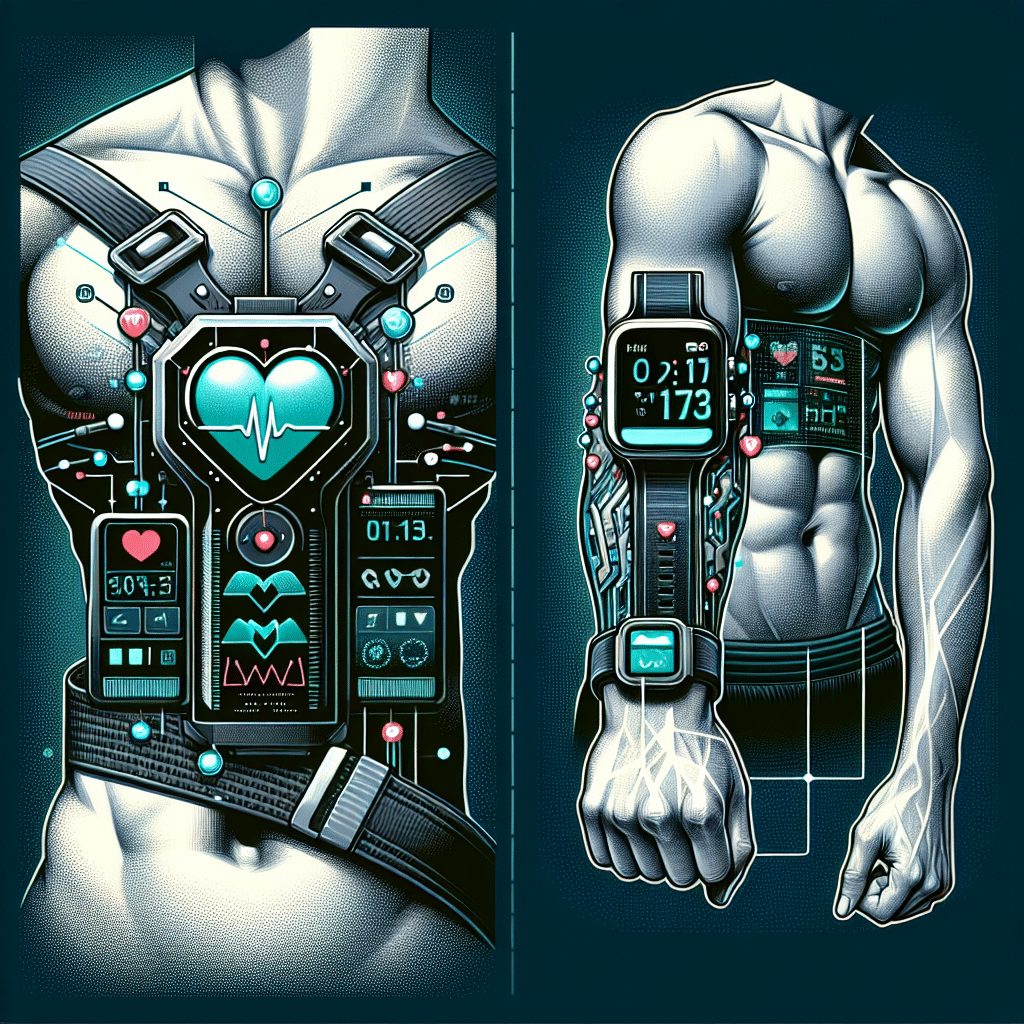Chest Strap Heart Monitors
1. Design and Comfort
Chest strap heart monitors typically have an elastic band that wraps around the chest, where the sensor is placed close to the heart. The snug fit ensures accurate readings but may feel uncomfortable for some users, especially during prolonged use. Proper sizing is crucial, as a strap that is too tight can cause chafing, while one that is too loose might result in inaccurate readings.
2. Accuracy
Chest straps are known for their high level of accuracy. They measure the electrical signals generated by the heart, which provides real-time heart rate data. The close proximity to the heart allows for immediate detection of heart rate changes, making them particularly useful for serious athletes who rely on precise metrics. Studies show chest straps typically outperform wrist monitors in terms of heart rate accuracy, particularly at higher intensities.
3. Battery Life
Most chest straps come equipped with long-lasting batteries, often lasting several months or even years, depending on usage. This is advantageous for frequent users who don’t want to worry about constantly charging their device. Many straps use replaceable batteries, providing an economical option for long-term use.
4. Connectivity and Compatibility
Chest strap monitors generally utilize Bluetooth or ANT+ technologies, allowing them to connect seamlessly with various fitness apps and smartwatches. This connectivity facilitates data sharing and real-time tracking, making it easier to analyze workout performance over time. The compatibility of chest straps with multiple devices enhances their appeal for users integrated into broader fitness ecosystems.
5. Use Cases
Chest strap monitors are favored by athletes participating in endurance sports such as running, cycling, and swimming. Their precision makes them optimal for high-intensity interval training (HIIT) or training sessions where heart rate variability is crucial for performance optimization.
Wrist Heart Monitors
1. Design and Comfort
Wrist heart monitors, commonly found in smartwatches and fitness bands, are designed for convenience and ease of wear. They use optical sensors to measure heart rate through the skin, providing a more casual, user-friendly experience. However, the design can sometimes lead to inaccurate readings if the watch is worn too loosely or if the skin conditions are not optimal, such as in colder temperatures.
2. Accuracy
While wrist monitors have improved tremendously with advances in technology, they often report lower accuracy than chest straps, particularly during high-intensity workouts. The optical sensors they employ tend to struggle with rapid heart rate changes or during high-motion activities. Research indicates that while they are suitable for general fitness tracking, they may fall short for serious athletes requiring dependable heart rate readings.
3. Battery Life
Wrist heart monitors can vary in battery life heavily, often depending on the model and features being used. Smartwatches with numerous functions, including GPS and notifications, may require daily charging. Conversely, simpler fitness bands can last several days or even weeks on a single charge. Users must weigh the need for features against battery life to find the best model for their lifestyle.
4. Connectivity and Compatibility
Wrist monitors typically incorporate Bluetooth connectivity and may integrate well with other health apps and devices. However, not all wrist monitors support third-party apps as effectively as chest straps do, which might limit analytical capabilities. Some devices may offer superior in-app functionalities, but compatibility can vary significantly across brands.
5. Use Cases
Ideal for casual fitness enthusiasts, wrist heart monitors are geared toward daily activity tracking, step counting, and general heart rate monitoring. They are particularly popular for those who exercise for health rather than performance, making them less suited for athletes who require detailed metrics and immediate feedback.
Comparative Analysis
1. Performance and Accuracy
When it comes to accuracy, chest straps edge out wrist heart monitors, especially during high-intensity training. Users aiming for detailed insights and precision will likely favor chest straps. Conversely, wrist monitors may suffice for casual exercises or less intense activities where precise data isn’t as crucial.
2. Comfort and Convenience
Wrist monitors are undoubtedly more convenient, providing a comfortable wearing experience without the need for adjustments. For those who prioritize ease of use, a wrist monitor would be the preferred choice. However, comfort might come at the cost of accuracy, particularly in more demanding exercise regimes.
3. Technical Features
Chest straps usually offer fewer features besides heart rate monitoring. They often lack built-in GPS and other fitness tracking capabilities found in wrist monitors. On the other hand, wrist monitors offer a wide range of additional features such as activity tracking, sleep monitoring, and smartphone notifications, making them versatile for everyday use.
4. Cost and Value
In terms of pricing, chest straps tend to be less expensive than high-end wrist monitors. However, when considering their longevity and accuracy, chest straps can be more valuable for committed fitness enthusiasts. Budget-conscious consumers may find entry-level wrist monitors that provide a fair amount of functionality for a lower investment.
5. Recommendations
For athletes and fitness enthusiasts focused on heart rate training, chest strap monitors are the go-to option. They offer unmatched accuracy during intense workouts. On the other hand, those seeking a multifunctional device for casual fitness tracking or daily lifestyle management may prefer a wrist heart monitor for its convenience and additional features.
In sum, the choice between a chest strap and a wrist heart monitor depends significantly on individual needs. Users should consider their specific fitness goals, exercise type, and how they plan to use heart rate data in enhancing their overall health and fitness regimes. By evaluating comfort, accuracy, functionality, and price, individuals can make an informed decision aligning with their lifestyle and fitness levels.
